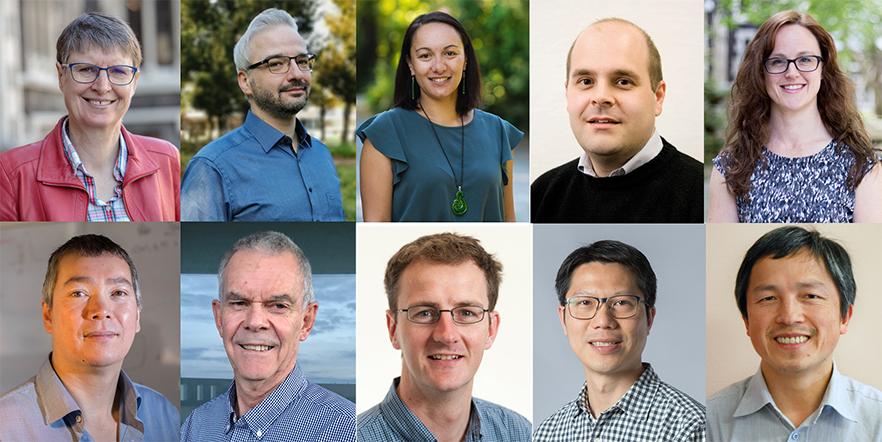The development of safe, low-cost, green hydrogen storage materials from New Zealand resources is now a step closer, thanks to an international research grant.
Professor Sally Brooker, of the University of Otago’s , is co-leading a German-NZ Green Hydrogen alliance with Dr Paul Jerabek, of the Institute of Hydrogen Technology, Helmholtz Zentrum Hereon.
The alliance, supported for five years with both German and New Zealand funding, was established to encourage networking and outreach, and establish a research centre at Otago. It aims to foster green hydrogen research and industry relationships between the two countries, providing significant opportunities for investment and attraction of high-value industrial and research partners.
It has just been awarded a three-year research grant from the German Federal Ministry of Education and Research (BMBF) and New Zealand’s Ministry of Business, Innovation and Employment (MBIE), to investigate safe, low-cost, hydrogen storage materials from New Zealand resources.
“After a lot of planning, our team is thrilled to be able to move forward with our investigations into producing green hydrogen storage materials from New Zealand resources,” Professor Brooker says.
Co‑led by Professor Brooker and Dr Jerabek, in partnership with Aimee Kaio (Awarua Runaka and Te Rūnanga o Ngāi Tahu) and Dr Linda Wright (NZ H2 Council), the MBIE grant supports a New Zealand-wide research team: Associate Professors Nigel Lucas and Michael Jack and Dr Anna Garden (Otago), Dr Chris Bumby (Robinson Research Institute, Victoria), Associate Professor Jonathan Lever (Unitec), Professor Peng Cao (Auckland), Associate Professor Alex Yip (Canterbury), and, most importantly, five PhD and three masters’ students.
Green hydrogen is a key commodity chemical, and a carbon-zero fuel so has potential to become a key vector to carry and store renewable energy, but it is challenging to store compactly.
Currently, it is stored either by compressing it to high pressure, or by liquification through cryogenic cooling. Both reduce the volume substantially, but neither are appropriate for large-scale long-term storage due to system leakage losses, safety concerns, and cost.
Dr Jerabek says the research program aims to support New Zealand’s and Germany’s transformation into green hydrogen economies by targeting the development of commercially viable metal alloy materials capable of safe and compact storage of hydrogen at close to ambient pressure and temperature.
“Metal hydrides are an extremely safe, versatile and technically very attractive option for hydrogen storage. However, to make them commercially competitive with alternative storage methods, new cost-effective sources of these metals are required.”

TOP: Professor Sally Brooker (Otago), Dr Paul Jerabek (HZH), Aimee Kaio (Awarua Runaka and Te Rūnanga o Ngāi Tahu), Associate Professor Nigel Lucas (Otago), Dr Anna Garden (Otago); BOTTOM Associate Professors Michael Jack (Otago) and Jonathan Leaver (Unitec), Dr Chris Bumby (Vic), Associate Professor Alex Yip (Canty), Professor Peng Cao (Akl). Missing: Dr Linda Wright (NZ H2 Council).
Professor Brooker says the highly collaborative research project is looking to combine scientific, engineering and economic expertise to test if New Zealand resources, such as ilmenite, can be used to generate these metal alloy materials, cost effectively and sustainably – with the benefits retained in the region.
“This will enable wide-spread uptake of new hydrogen technologies by various sectors, including electricity, transportation and industry, with outcomes intrinsically linked to, and aligned with, the Māori worldview of kaitiakitanga,” she says.
Professor Richard Blaikie, Otago’s Deputy Vice-Chancellor, Research and Enterprise, says the University is “fully committed to deepening our partnership with iwi on important project such as this, and to meeting our ambitious sustainability goals”.
“It is exciting to know that new researchers will be trained in the course of this project, contributing to New Zealand’s future workforce needs in this rapidly evolving energy sector.”
Tā Tipene O’Regan, Kaumātua of Ngāi Tahu and Upoko of Awarua Runanga says green hydrogen has significant potential for the Murihiku / Southland region, both as an export earner and a source of employment.
“It’s important that we make wise investments now for the future of our region and we act in the national interest. Green hydrogen will allow us to continue to make our contribution both to the New Zealand economy and support the fight against climate change.
“The future conversion of existing Manapouri hydro and development of new renewable energy projects to support a large-scale green hydrogen plant for both export and domestic use in Awarua is a ‘no brainer’.”






